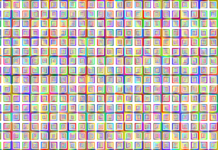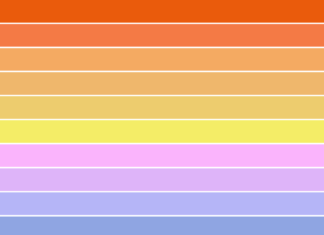Hibiclens is a topical antiseptic solution containing chlorhexidine gluconate, widely used for surgical scrubbing, hand washing, wound care, and general skin cleansing. It has a broad spectrum of antimicrobial activity and is effective against bacteria, fungi, and certain viruses. Hibiclens is available in various formulations and strengths, with specific instructions for application and usage. While generally safe for most individuals, precautions and contraindications apply, and adverse reactions may occur in some cases. Overall, Hibiclens is a valuable tool in infection prevention and control, both in healthcare settings and for home use.
1. Overview of Hibiclens: Hibiclens is a brand name for a topical antiseptic solution containing the active ingredient chlorhexidine gluconate. It is widely used in healthcare settings as a surgical scrub, hand wash, and skin cleanser to reduce the risk of infection. Hibiclens is also available for consumer use at home, offering antiseptic properties for wound care, skin cleansing, and general hygiene purposes.
2. Active Ingredient: The primary active ingredient in Hibiclens is chlorhexidine gluconate, a broad-spectrum antimicrobial agent commonly used to kill bacteria and other microorganisms on the skin and mucous membranes. Chlorhexidine gluconate works by disrupting the cell membrane of bacteria, leading to their destruction and preventing their proliferation.
3. Indications for Use: Hibiclens is indicated for various uses in both clinical and home settings. In healthcare environments, it is commonly used as a preoperative skin preparation for surgical procedures, a hand wash for healthcare professionals, and a skin cleanser for patients. At home, Hibiclens can be used to cleanse minor wounds, cuts, and abrasions, as well as to prevent infections in individuals with compromised immune systems.
4. Mechanism of Action: Chlorhexidine gluconate in Hibiclens works by disrupting the cell walls of bacteria, fungi, and viruses, leading to their lysis and death. It has both bactericidal and bacteriostatic properties, meaning it can kill bacteria on contact and inhibit their growth over time. Chlorhexidine gluconate is effective against a wide range of Gram-positive and Gram-negative bacteria, as well as certain fungi and enveloped viruses.
5. Formulations and Strengths: Hibiclens is available in various formulations and strengths, including liquid solution, foaming pump, and individual wipes. The concentration of chlorhexidine gluconate in Hibiclens typically ranges from 0.5% to 4%, depending on the intended use and application. Higher concentrations are often used for surgical scrubbing and preoperative skin preparation, while lower concentrations are suitable for general skin cleansing and wound care.
6. Application and Usage Instructions: Hibiclens is applied topically to the skin or mucous membranes according to the manufacturer’s instructions. For surgical scrubbing and preoperative skin preparation, Hibiclens is typically applied to wet skin and lathered for several minutes before rinsing thoroughly with water. For hand washing, a small amount of Hibiclens is applied to the hands and rubbed together to create a lather, followed by rinsing with water. For wound care and general skin cleansing, Hibiclens can be applied directly to the affected area and rinsed off with water.
7. Precautions and Contraindications: While Hibiclens is generally considered safe for most individuals when used as directed, certain precautions and contraindications apply. It should not be used on mucous membranes, open wounds, or near the eyes, as it may cause irritation or damage. Individuals with known allergies to chlorhexidine gluconate or any other ingredients in Hibiclens should avoid its use. Pregnant and breastfeeding women should consult with a healthcare professional before using Hibiclens.
8. Side Effects and Adverse Reactions: Common side effects of Hibiclens may include skin irritation, redness, itching, and dryness at the application site. In rare cases, individuals may experience allergic reactions or hypersensitivity to chlorhexidine gluconate, leading to more severe skin reactions such as contact dermatitis or anaphylaxis. If adverse reactions occur, discontinuation of Hibiclens and consultation with a healthcare professional are recommended.
9. Storage and Handling: Hibiclens should be stored at room temperature away from heat, moisture, and direct sunlight. It should be kept out of reach of children and pets to prevent accidental ingestion or misuse. The product should be used within the expiration date indicated on the packaging to ensure efficacy and safety.
10. Availability and Accessibility: Hibiclens is widely available for purchase over the counter at pharmacies, drugstores, and online retailers. It is commonly used in healthcare settings, including hospitals, clinics, and surgical centers, as part of infection control protocols. Consumers can also purchase Hibiclens for home use to promote wound healing, prevent infections, and maintain good hygiene practices.
Hibiclens plays a vital role in infection prevention and control in healthcare settings, where the risk of nosocomial infections (hospital-acquired infections) is a significant concern. It is routinely used by healthcare professionals as part of surgical site preparation, preoperative skin antisepsis, and hand hygiene protocols to reduce the risk of surgical site infections and transmission of pathogens between patients and healthcare workers. By effectively killing bacteria on the skin and mucous membranes, Hibiclens helps create a clean and sterile environment conducive to patient safety and optimal clinical outcomes.
In addition to its use in healthcare settings, Hibiclens is also valuable for home use, where it serves as a versatile antiseptic solution for wound care, skin cleansing, and general hygiene purposes. It is commonly used to cleanse minor cuts, scrapes, and abrasions to prevent infection and promote wound healing. Hibiclens can also be used as a daily skin cleanser for individuals with compromised immune systems or those at higher risk of skin infections. Its broad-spectrum antimicrobial activity makes it an essential tool for maintaining good hygiene practices and reducing the risk of infectious diseases in the home environment.
Despite its widespread use and efficacy, Hibiclens is not without potential risks and limitations. Like any antiseptic or disinfectant, prolonged or excessive use of Hibiclens may lead to skin irritation, dryness, or allergic reactions in some individuals. It is essential to follow the manufacturer’s instructions carefully and avoid contact with sensitive areas such as the eyes, mouth, and mucous membranes. Individuals with known allergies to chlorhexidine gluconate or any other ingredients in Hibiclens should refrain from using the product and seek alternative options for wound care and skin cleansing.
In conclusion, Hibiclens is a valuable antiseptic solution widely used in both healthcare and home settings for infection prevention and control. Its broad-spectrum antimicrobial activity, ease of use, and versatility make it an essential tool for healthcare professionals, patients, and consumers alike. By effectively killing bacteria, fungi, and certain viruses on the skin and mucous membranes, Hibiclens helps reduce the risk of infections and promote better health outcomes. However, it is essential to use Hibiclens responsibly and in accordance with the manufacturer’s instructions to minimize the risk of adverse reactions and ensure optimal efficacy.






















